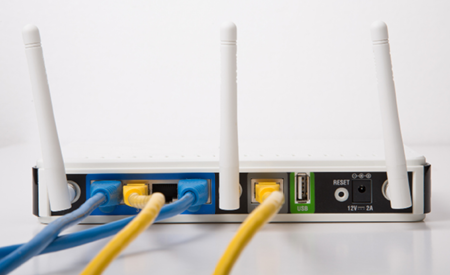3 Reasons Why Power over Ethernet Demands Cat 6A Cable
Power over Ethernet (PoE) is great for supplying electricity to a variety of networking, AV and computing devices – any device connected to the network – without an outlet or adapter. It also reduces the amount of building materials required to power and connect a device to the network by allowing a single cable to provide both services.

No longer confined solely to VoIP phones and security cameras, more types of powered devices are beginning to call for Power over Ethernet connections. And these devices are requiring higher power levels, too. Wireless Access Points, digital signage, videoconferencing systems and laptops are all increasing the amount of power running through cables. In fact, a new PoE standard, IEEE 802.3bt, supports up to 100W of power per cable.
But higher power levels running through a cable can cause performance issues – namely by making the cable hotter. And when the cable gets hotter, insertion loss increases. This escalates your chances of your business experiencing a productivity killer – downtime – and may also damage the cable itself.
The type of cabling you select can make a major difference in terms of how heat inside the cable is managed, as well as how it impacts performance. Category 5e and Category 6 cable can be used to support PoE devices, but the consensus is clear: You’re better off using Category 6A for a number of reasons we’re going to cover here.
1. Larger-Gauge Diameter
A cable that offers a larger conductor diameter can reduce resistance and keep power waste to a minimum because it has a lower temperature increase compared to smaller-gauge Category 5e and Category 6 cables. This better performance will provide additional flexibility, including larger bundle sizes, closed installation conditions and higher ambient temperatures.
For example, when comparing 23-gauge and 24-gauge cabling, there is a large variance in how power is handled. As much as 20% of the power through the cable can get “lost” in a 24-gauge Category 5e cable, leading to inefficiency.
2. Less Power Loss
Energy efficiency increases when structured cable maximizes the power running through it to waste as little as possible.
As we mentioned above, losing nearly one-fifth of the total power in a 24-gauge Category 5e cable may seem like a lot of power loss – and it is. But doing the math will show you that the total dollar amount comes out to be only around $7 per year. The numbers start adding up; however, when you realize that it costs $7 per year per PoE device across your entire facility or campus – from surveillance cameras to wireless access points. Although it may seem like a small dollar amount when viewed out of context, power dissipation through a cable can ultimately lead to higher-than-necessary operating costs.
It’s also important to keep in mind that the number of Power over Ethernet devices is only going to increase in your facility as you install more wireless access points to support things like BYOD (bring your own device). As a result, you’ll need more PoE cable – and there will be more opportunity for wasted energy.
Less power is dissipated in a 23-gauge Category 6A cable, which means that more of the power being transferred through the cable is actually being used, improving energy efficiency and lowering operating costs.
3. Tightly Packed Cables
If your cables are tightly packed in their trays and pathways, the chance for heat increases because it doesn’t have a chance to dissipate away from the cable.
Some Category 6A cable has enough insertion loss margin to handle the extra heat generated from tightly packed cables without impacting performance. (This doesn’t apply to all Category 6A cables. Even though they promise a 100 m solution, some cables may become an 85 m solution if the temperature increase is too high.)
Belden 10GXS cable can handle the added heat while maintaining its full 100 m performance – and it’s the only Category 6A cable that can make this claim.
![System.String[]](https://assets.belden.com/transform/0994b259-c761-40ea-9128-f942c2913e9f/ron-tellas?io=transform:fill,width:300,height:300)